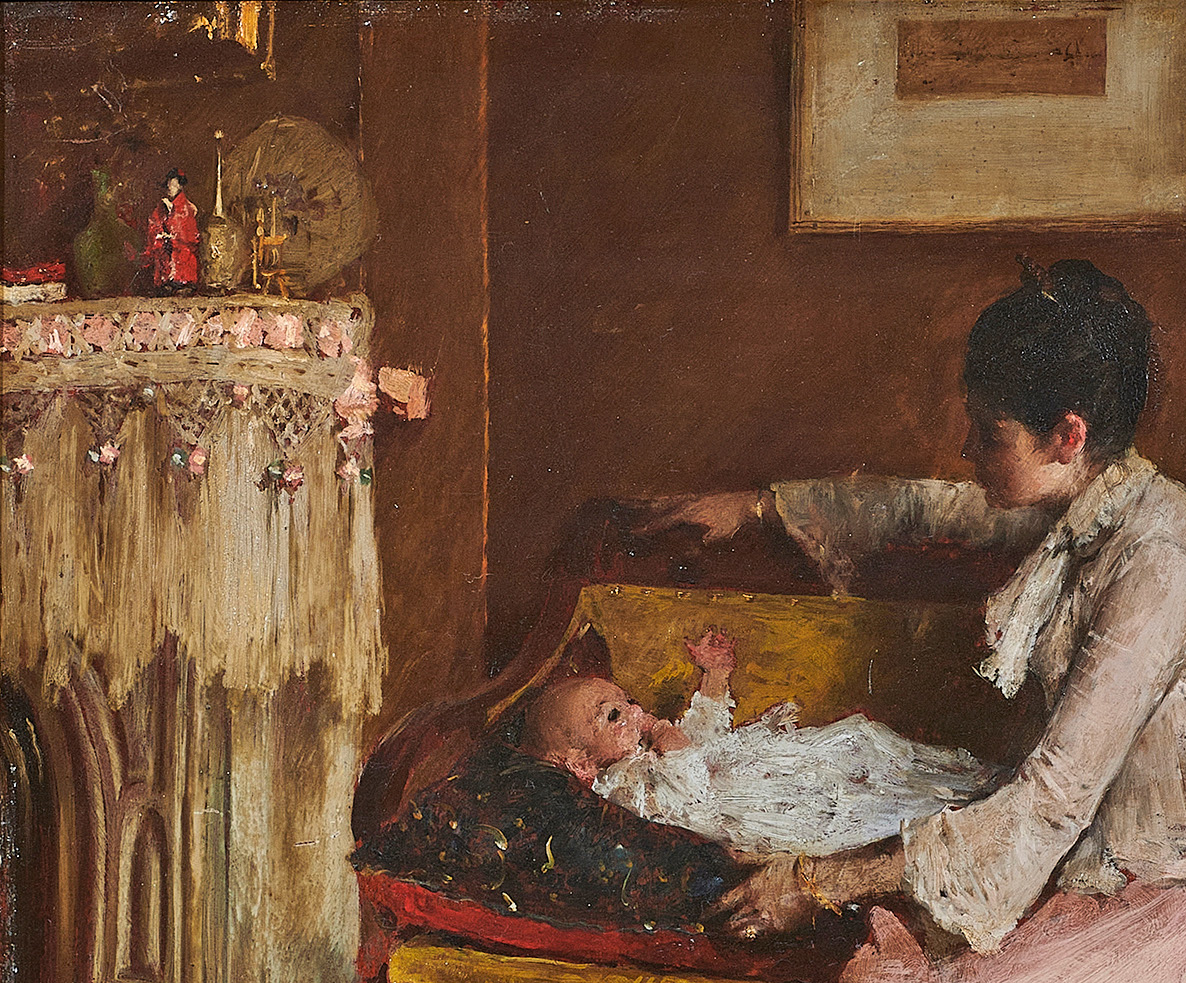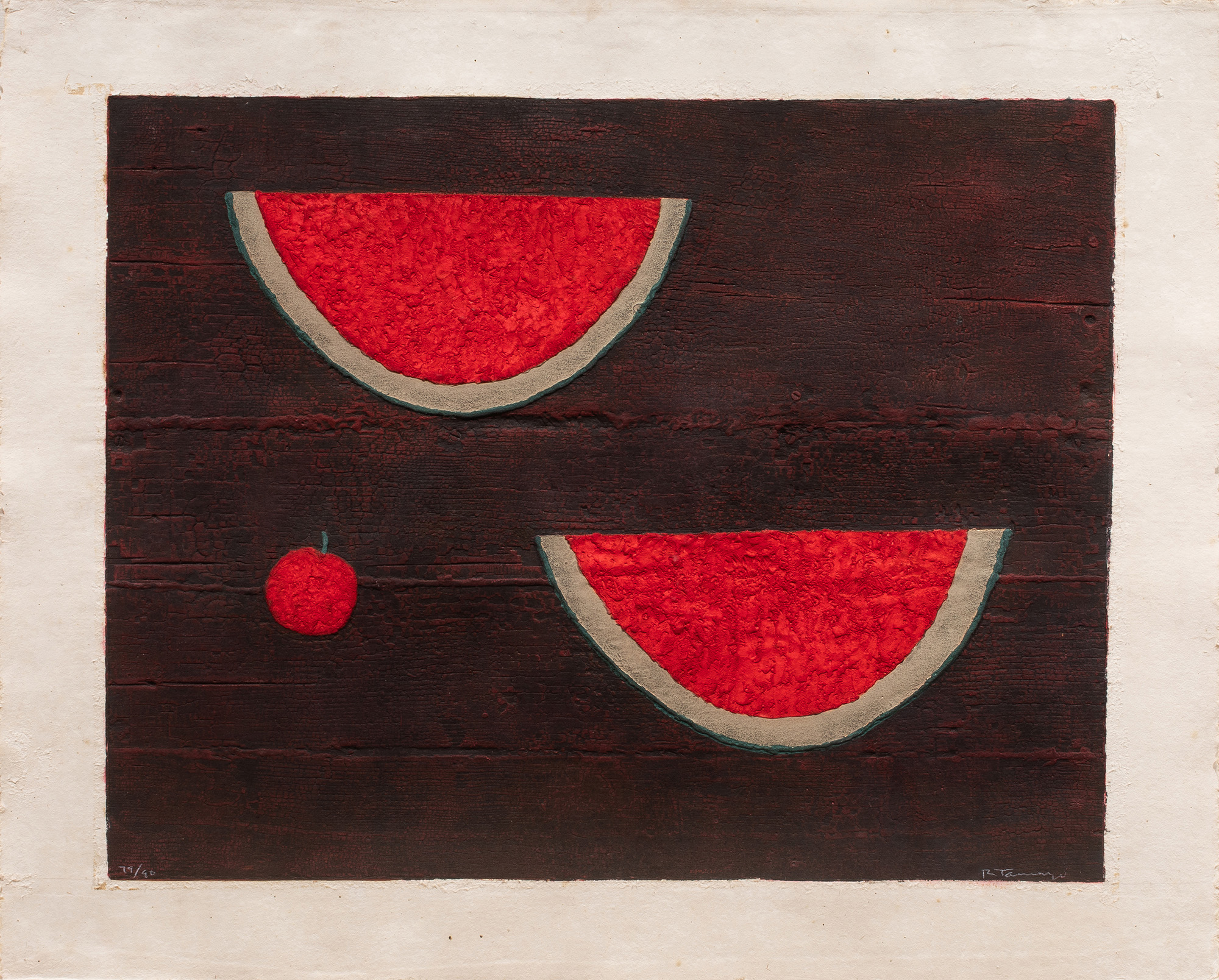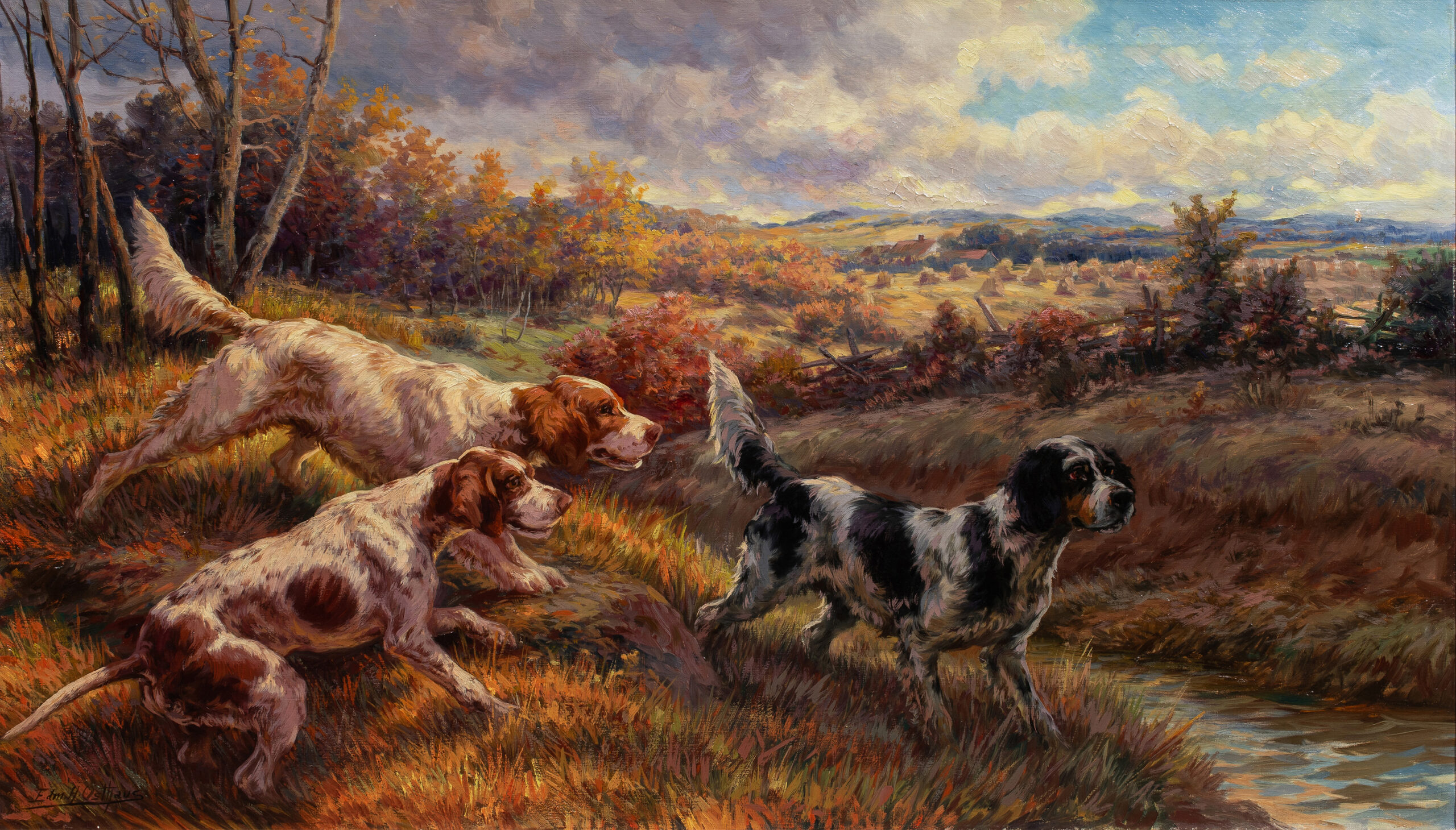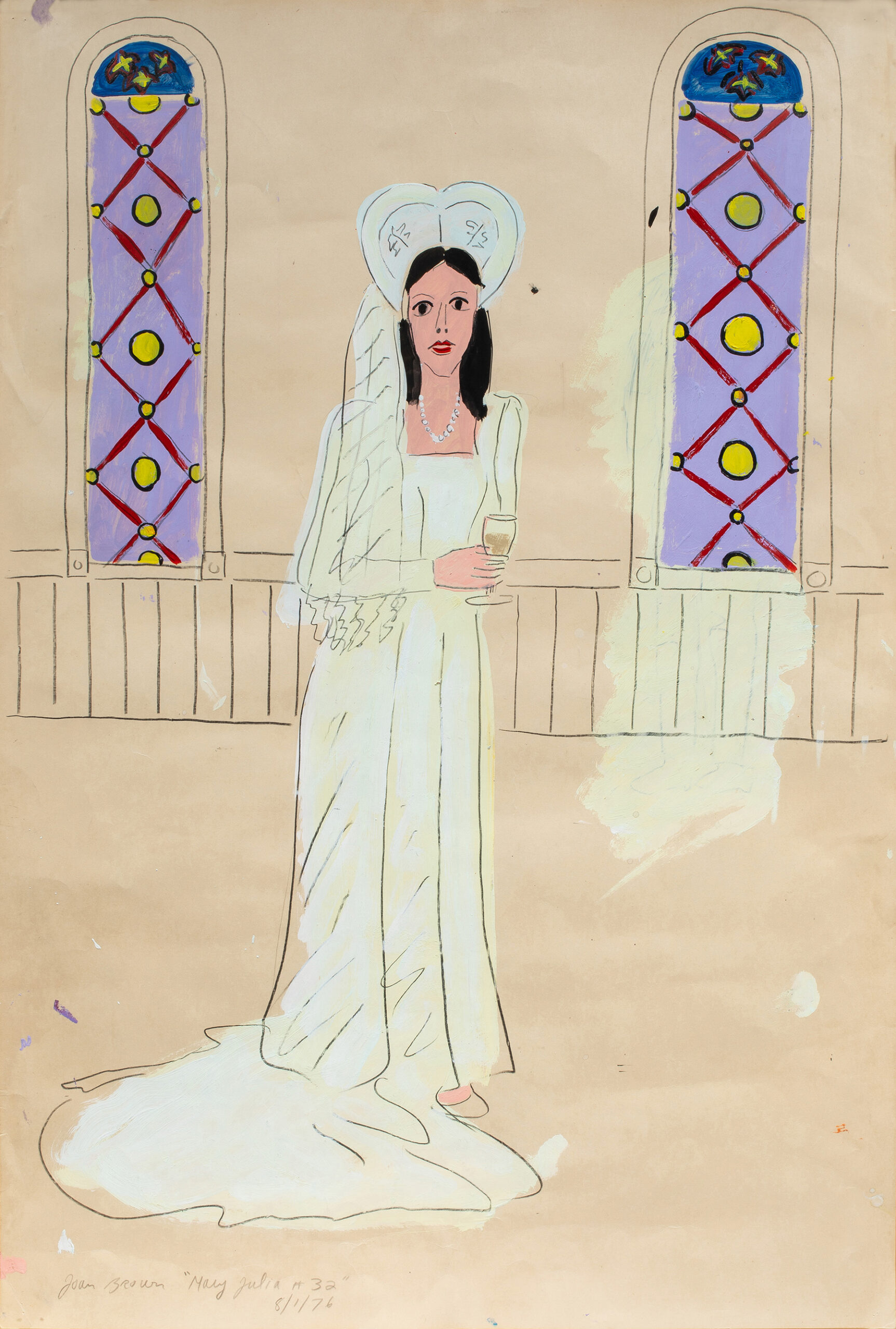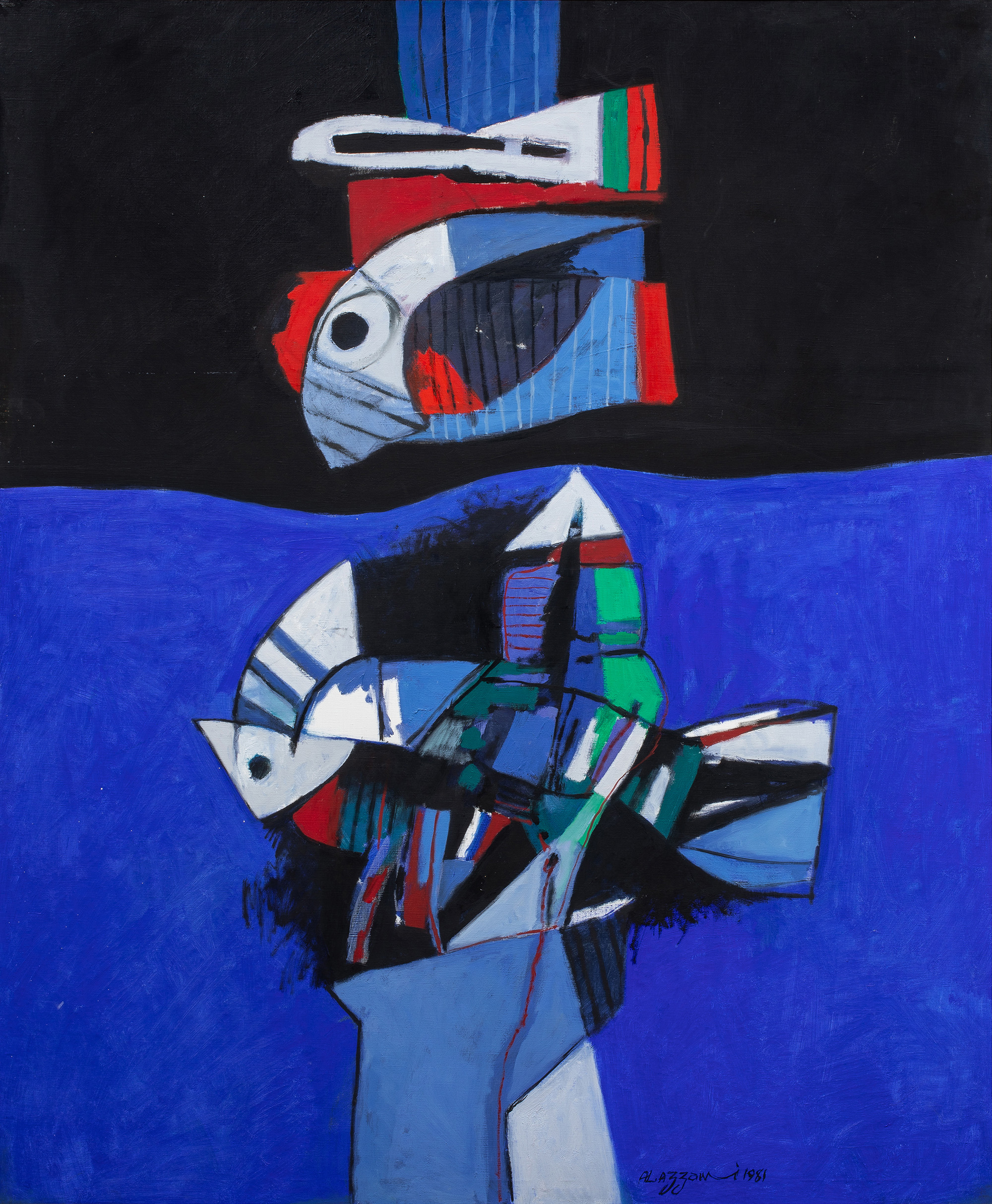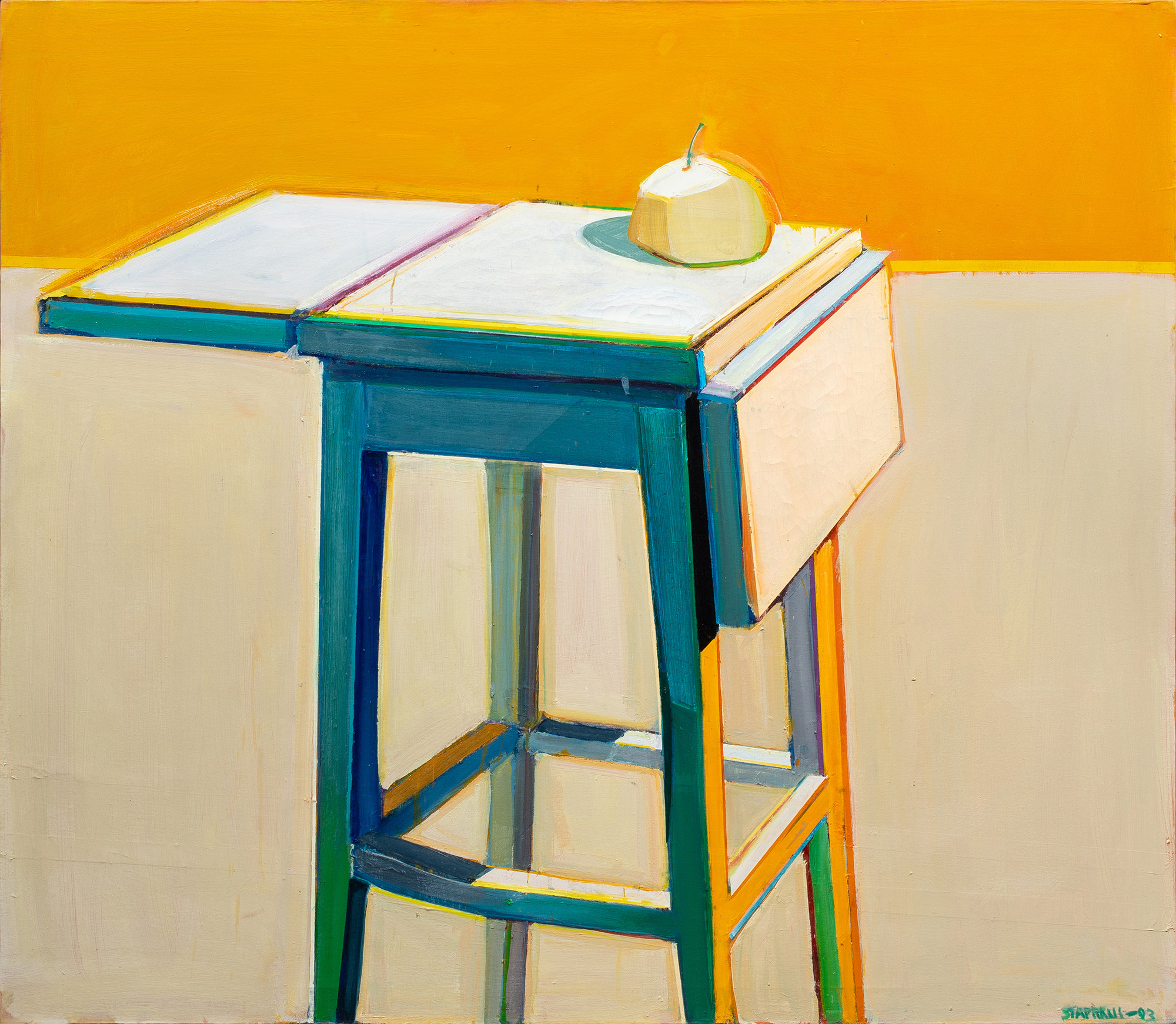This September 19th, in our Important Fall Fine Art Auction, Clars is thrilled to offer a rare and captivating work by William Merritt Chase — whose interiors are widely celebrated as some of the finest achievements of American Impressionism.
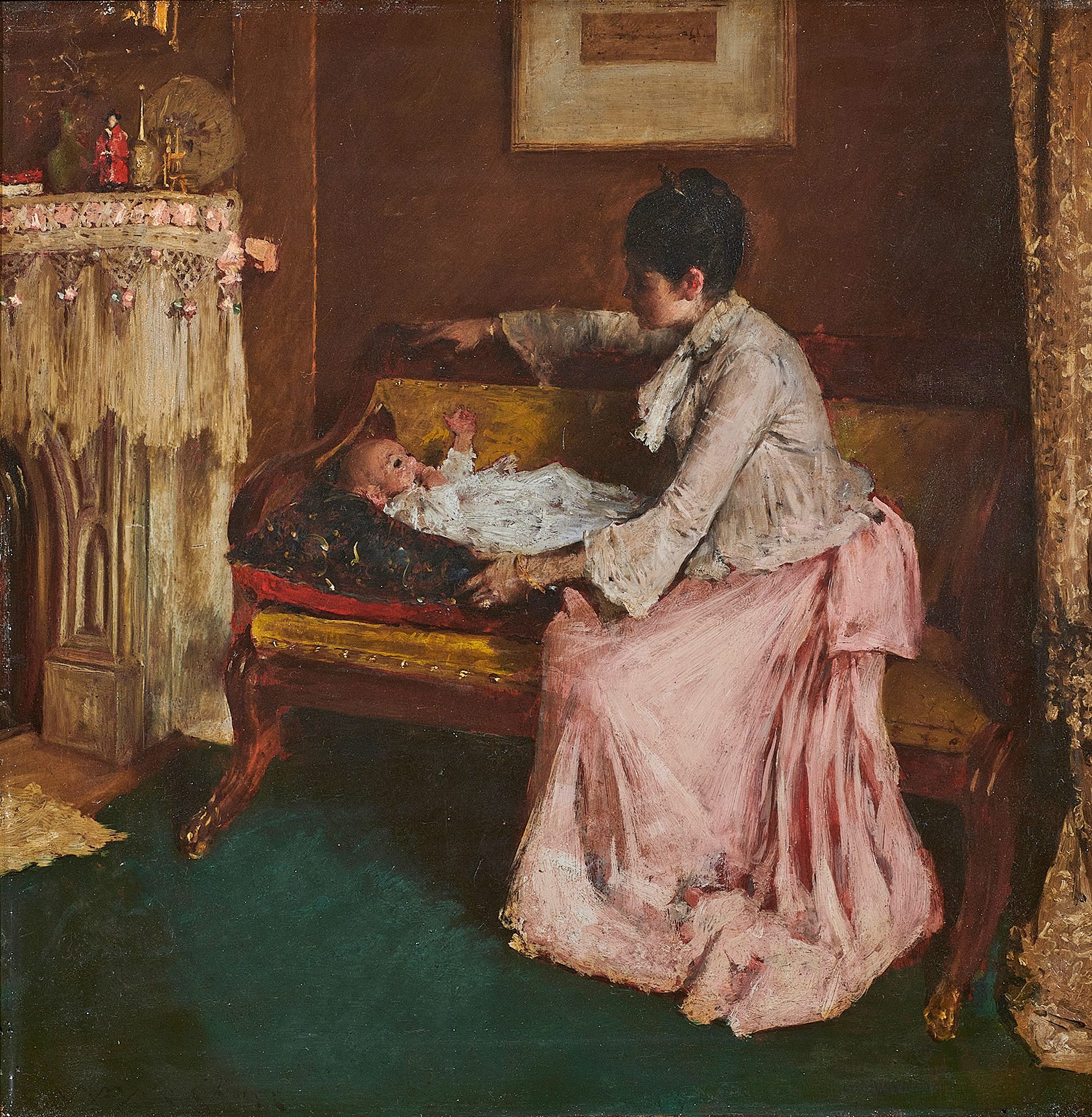
Estimate: $378,000
Collector Duncan Philips noted their evocative nature, stating, “Whether it is the sumptuous splendor of a Venetian palace, shades from the summer sun, or just perspective of rooms, in which one would like to live, the charm of a Chase interior is immediate. It is more than a trick of cool light on reflecting surfaces, mahogany tabletops and hardwood floors. It is a hint of once familiar moments, long forgotten, a sentiment of the quiet dignity of a patrician home” (quoted in R. Pisano, William Merritt Chase, New York 1982, p. 64). Works such as A Mother’s Joy, which feature the artist’s family, not only highlight Chase’s remarkable craftsmanship but also his ability to transform familiar domestic scenes into masterpieces of Impressionistic texture, color, and compositional balance.
Chase’s cosmopolitan taste and sophisticated aesthetic drew him to a diverse array of decorative arts and objects, many of which he incorporated into his paintings. D. Frederick Baker, a Chase expert, observes, “The decorative tasseled drapery hanging from the fireplace mantel is similar to that found in photographs of the dining room fireplace mantel in their Greenwich Village home. And what appears to be a small Japanese doll, wearing a red outfit of some sort, on the mantel is similar to those in several Chase still life paintings” (unpublished letter, October 2, 2023). In A Mother’s Joy, Chase skillfully integrates the pink of Alice’s skirt into the mantel, harmonizes tans and taupes throughout the curtain, blouse, and fireplace, and uses signature red accents that he considered crucial for the success of his compositions.
Many scholars have highlighted Chase’s notably warm and engaging personality. A devoted family man, he was often surrounded by his wife, Alice, and their eight children, who appear throughout his oeuvre. Many of Chase’s masterpieces depict family members, friends, students, or models in relaxed, elegant settings, as exemplified by A Mother’s Joy. This recently rediscovered gem captures a tender moment between Chase’s wife and their second daughter, Koto Robertine Chase, born January 5, 1889, likely in the dining room of their West 4th Street home in Greenwich Village. Formerly owned by New Jersey Governor Franklin Murphy, A Mother’s Joy is a rare and exceptional interior scene that celebrates both the Victorian decor of Chase’s home and the intimacy of a cherished family moment.
According to the catalogue raisonné, A Mother’s Joy is part of a series depicting mother-and-child themes, including Mother and Child (The First Portrait) circa 1887, housed at the Museum of Fine Arts, Houston, and Mother and Child (Mother’s Love) circa 1892, located at the Sheldon Museum of Art in Lincoln, Nebraska. Critics have lauded these works for their engaging subject matter, composition, technique, and color, establishing the mother-and-child motif as one of Chase’s most celebrated themes. A reviewer described Mother and Child (Mother’s Love) as “Intimate and charming is the portrait of the artist’s wife and little daughter. The mother is seated and the child’s arms clasped around her neck. In the woman’s eyes beams the true love light of motherhood” (Chicago Herald Tribune, November 28, 1897). Similarly, A Mother’s Joy captures a profound sense of maternal affection, as Alice gently leans toward Koto, their eyes meeting in a loving gaze. The composition’s circular motif, created by their outstretched arms, symbolizes the infinite and unconditional love between mother and child.
The provenance of A Mother’s Joy includes its acquisition directly from the artist by Franklin Murphy, Governor of New Jersey (1902–1905), at Fifth Avenue Art Galleries, New York, on March 6, 1891, where it was sold by the artist as lot 64. It later entered a private collection in Kentucky. The painting was prominently exhibited at the Annual Exhibition of the Society of American Artists in New York in May 1889, the 17th Annual Chicago Interstate Industrial Exposition in September 1889, and at American Art Galleries, New York, in 1890.
The work is documented in Ronald G. Pisano’s William Merritt Chase: Portraits in Oil, Vol. II (New Haven, Connecticut, 2007, p. 84, no. OP.164). It is accompanied by a letter of authenticity from D. Frederick Baker/Ronald G. Pisano, Inc., dated October 2, 2023.

